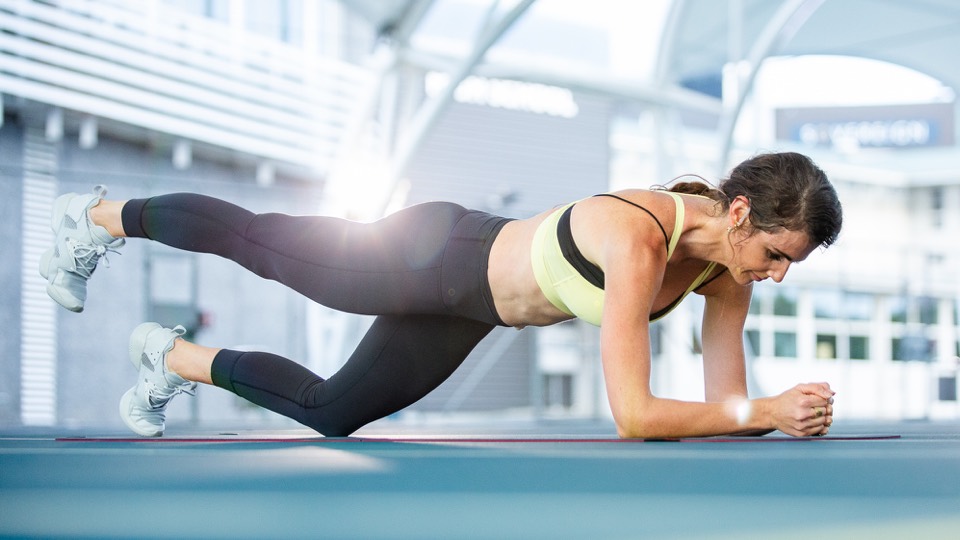Within the current fitness scene, the phrase core circuit workout has come to represent development of strength, stability, and general fitness. A core circuit exercise may be a revolution for anybody trying to increase overall fitness or an athlete trying to maximize performance. This all-inclusive guide will go over the advantages, organization, and variants of core circuit exercises so you may properly include them into your exercise program.
Describe A Core Circuit Workout
Targeting the core muscles—which comprise the abdominals, oblues, lower back, and hips—a core circuit workout is a sequence of exercises. A core workout circuit uses many muscle groups concurrently, unlike conventional ab workouts, which usually concentrate on one muscle area, therefore enhancing strength, endurance, and stability.
Exercises in a circuit workout are done one after another with little downtime between. Along with strengthening your muscles, this style raises your heart rate, therefore benefiting your cardiovascular system.
Why Essential Core Circuit Exercises

1. Enhanced Basic Strength
Improved core strength is the main advantage of a core ciDescribe A Core Workoutrcuit training. Almost every movement you do—from lifting and bending to twisting and stabilizing your body—involves your core muscles. Strong core helps to increase general functional strength, posture, and helps prevent injuries.
2. Improved Equilibrium And Stability
Dynamic motions requiring balance and stability abound in core workout circuit. Regular use of these exercises can help you to better regulate the motions of your body, therefore enhancing your athletic performance and lowering your risk of falls and accidents.
3. Optimal Burning Of Fat
A core circuit raises your heart rate and maintains it high all through the session as it entails constant action with little rest. For individuals trying to drop additional weight, this is a great workout as it not only builds strength but also encourages fat burning.
4. Flexible and Changing
Any degree of fitness may be matched by core circuit exercises. You may adjust the routines and intensity to fit your level of performance—beginner or advanced athlete. Because of this adaptability, everyone can access core circuit exercises regardless of their degree of fitness.
Structure a Core Circuit Workout

Usually, a well-rounded core circuit consists of a variety of workouts aiming at many core regions. Here's a 30-minute core workout's basic layout:
1. Five Minute Warm-up
Warming your body will help you to ready your muscles and joints for your core circuit. A decent warm-up might comprise:
Middle turns, arm circles, and leg swings are all part of dynamic stretches.
Jogging in place or jumping jacks counts as light cardio.
2. Twenty Minutes' Core Circuit
Spend 45 seconds doing each workout then 15 seconds resting. Finish all exercises in order, then take one to two minute breaks before running the circuit two or three times.
Exercise 1: Planks
-
Target: Entire core, with lower back and abdominals especially in mind.
-
Variations: Startners should try the plank on their knees. Advanced people might choose side planks or variants like plank jacks.
Exercise 2: Russian Twists
-
Obliques and abdominals are the targets.
-
Variations: To intensify your workout, hold a weight or medicine ball. The workout may be done without weights beginning newbies.
Exercise 3: is a bicycle crunch
-
Target: oblues and abdominals.
-
Variation: Emphasize deliberate motions, making sure each leg completely extends for best core involvement.
Exercise 4: Mountain Climbers
-
Goals: hips, shoulders, and abdominals.
-
Variation: Slow down to concentrate on core activation or speed to meet a more demanding cardiac task.
Exercise 5: Leg Raises
-
Lower abdominals and hip flexors are your targets.
-
Variations: While skilled exercisers might add a hip lift at the peak of the action, beginners could gently bend their knees.
Exercise 6: Superman
-
Lower back, glues, and hamstrings are your targets.
-
Variation: To raise challenge, hold the top position for a few seconds.
3. Cool-down And Stretching For Five Minutes
Spend some time cooling down and stretching the muscles you worked on following your core workout circuit. This facilitates recuperation and helps to avoid damage.
Focus on the core muscles—that is, the abdominals, lower back, and hip flexors—static stretches.
Use this time to slow down your heart rate and unwind your body through deep breathing.
Variations of Core Circuit Activities

One of the benefits of a core circuit is its flexibility. To keep your program interesting and demanding, vary the workouts, intensity, and length of each. Here are some variations to give thought:
1. Bodyweight Core Circuit
No tools? No issue here. A bodyweight core circuit works just with your own weight to test your muscles. Perfect exercises for this kind of activity are planks, mountain climbers, and leg lifts.
2. Core Circuit with Weighting
Including weights in your core circuit exercise raises the intensity and strengthens more of your body. Include weights, kettlebells, or a medicine ball in workouts such farmer's walks, weighted sit-ups, and Russian twists.
3. High-Intensity Central Circuit
A high-intensity core workout circuit is best for people trying to optimize calorie burn and develop endurance. Create workouts combining core work with cardio like mountain climbers, burpees with a twist, and kettlebell swings.
4. Foundation Ball Core Circuit
By working your stabilizer muscles, a stability ball may provide a further challenge to your core circuit training. To up the challenge of your program, try ball passes, stability ball rollouts, and stability ball planks.
5. Core Circuit Inspired by Yoga
Through emphasizing breath, balance, and controlled movements, yoga presents a different method of core training. For a thoughtful and powerful core workout, combine yoga-inspired movements including boat posture, side plank variants, and downward dog to plank transitions. You may alos read this: How To Perform A Pull-Up Exercise for Ladies
Advice for Core Circuit Workout Success

1. Pay Attention To Form
In a core circuit exercise, proper technique is crucial to guarantee you're working the correct muscles and avoiding damage. Spend some time learning every exercise, beginning with the fundamentals and working toward increasingly difficult motions.
2. Advancement Incrementally
If you have never done core circuit exercises, start with a shorter circuit or less repetitions and progressively raise the intensity as your endurance and strength grow.
3. Stay Regular
Seeing benefits depends on consistency. Along with other types of exercise like strength training, cardio, and flexibility work, try to schedule two to three times a week a core circuit session.
4. Attend to Your Body
Consider how your body feels both during and following your workout. If you experience pain or discomfort, you should probably modify your exercise regimen or take a day off Recall, recuperation is just as crucial as the workout itself.
5. Ignite Your Body
Your trip towards fitness depends much on nutrition. A balanced diet that supports your energy levels and muscle recovery can help you to feed your body. Your core circuit exercises will maximize if you have protein, good fats, and complex carbs.
Conclusion
One of the best and fastest approaches to increase general fitness, strengthen, and improve stability is a core circuit workout. With so many exercises and variants available, you may customize your workouts to fit your particular objectives and maintain a fresh and interesting program. To get the greatest results, keep consistent, remember to concentrate on correct form and improve gradually. Including core circuit exercises into your exercise program can help you to get to a stronger, more robust core.